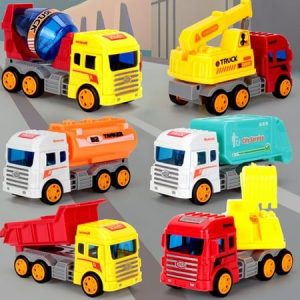What is the most popular children’s toy? Toys! They’re a constant source of joy and entertainment for children, sparking imaginations and creativity for generations. But with so many options on store shelves, what toys reign supreme in the hearts of kids (and maybe even some adults!)?
This article explores some of the most popular children’s toys across different eras, highlighting their enduring appeal and the reasons why they continue to capture imaginations. So, buckle up and get ready for a trip down memory lane!
The Classics Never Go Out of Style
Some toys have staying power. Here are a few timeless favorites that have entertained children for decades:
-
Building Sets: From wooden blocks to plastic bricks, building sets allow kids to construct anything they can imagine. These open-ended toys encourage creativity, problem-solving skills, and fine motor development.
-
Dolls and Action Figures: Dolls and action figures let kids play out real-life scenarios or fantastical stories. They provide opportunities for social interaction, imaginative play, and exploring emotions.
-
Stuffed Animals: Cuddly companions and confidantes, stuffed animals offer comfort, security, and a friendly face for playtime adventures.
-
Ride-On Toys: Whether it’s a rocking horse, a toy car, or a scooter, ride-on toys provide endless entertainment. They help kids develop gross motor skills, balance, and coordination.
-
Arts and Crafts Supplies: From crayons and markers to paints and play dough, arts and crafts supplies allow kids to express themselves creatively. These open-ended materials nurture artistic development and imagination.
These classic toys are popular for a reason. They’re versatile, engaging, and encourage important developmental skills in children.
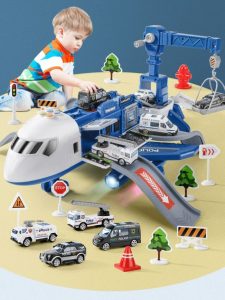
The Rise of Tech Toys
The digital age has brought a new wave of popular toys. Here are some of the tech toys that have captured children’s attention:
Video Games:
Video games offer immersive experiences that challenge kids problem-solving skills, reflexes, and hand-eye coordination. There’s a wide variety of video games available, catering to different interests and age groups.
Remote-Controlled Toys:
From cars and trucks to robots and drones, remote-controlled toys provide hours of fun. They allow kids to explore movement, control, and cause-and-effect.
Educational Tablets and Robots:
These interactive toys combine play with learning. They can introduce children to new concepts, letters, numbers, and even coding in a fun and engaging way.
Tech toys offer exciting features and can be a great way to integrate technology into play. However, it’s important to find a balance between screen time and other play activities.
Popularity Can Change
Toy trends come and go, influenced by pop culture, movies, and new technologies. Here are some examples of fads that took the toy box by storm:
-
Fidget Spinners: These small, handheld devices with spinning centers were a huge craze for a short time. Fidget spinners were marketed to help with focus and anxiety, but their popularity fizzled out quickly.
-
Beanie Babies: These plush toys with unique tags were a must-have item in the 1990s. Collectors drove up beanie baby prices, but the beanie baby bubble eventually burst.
-
Virtual Pets: Tamagotchis and other virtual pets were digital companions that required feeding, cleaning, and care. While virtual pets were a novelty, their popularity waned as technology advanced.
Fad toys can be a fun distraction, but their popularity is often short-lived. Classic toys, on the other hand, tend to have more lasting appeal.
The Importance of Play
No matter what the most popular toy is, play is essential for children’s development. Playing allows kids to:
-
Explore and experiment: Play provides a safe space for kids to try new things, take risks, and learn from their mistakes.
-
Develop social skills: Through play, kids learn to interact with others, take turns, share, and cooperate.
-
Boost creativity and imagination: Play allows kids to express themselves creatively, invent stories, and explore different scenarios.
-
Develop physical skills: Active play helps kids develop gross motor skills, coordination, and balance.
The best toys are those that encourage these essential skills and spark a love for learning and exploration.
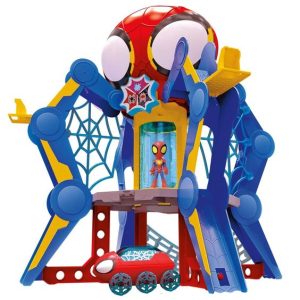
The Magic of Play
What is the most popular children’s toy? There isn’t one single most popular toy! Kids’ interests are so diverse, and what’s hot one year might be eclipsed by something new the next. The good news is, there are amazing toys out there for every kind of kid.
Here are some things to consider when thinking about toy popularity:
-
Age: Babies and toddlers love bright colors, simple shapes, and toys that make sounds or textures to explore. Older kids might gravitate towards more complex building sets, dolls with elaborate accessories, or action figures.
-
Interests: Some kids love sports and might enjoy toy cars, balls, or sports equipment. Others might be creative and love art supplies, dress-up clothes, or musical instruments.
-
Trends: Commercials, movies, and popular culture can influence what kids want. For instance, a new superhero movie might lead to a surge in action figure sales.
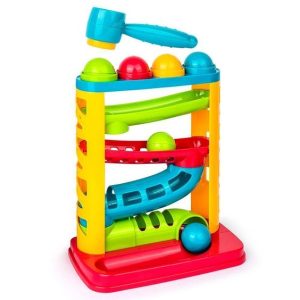
The Joy of Exploration
What is the most popular children’s toy? The most important thing is that a toy sparks a child’s imagination and encourages them to explore and play. So whether it’s a classic building block or a high-tech gadget, the perfect toy is the one that brings a smile to a child’s face and fuels their sense of wonder.
Here are some final thoughts:
-
The best toys are open-ended. They allow kids to use their creativity and come up with their own ways to play.
-
Simple toys can be just as engaging as complex ones. Cardboard boxes, sticks, and pebbles can provide hours of entertainment.
-
The most important plaything of all might be your time and attention! Get down on the floor and play with your child. You’ll both have a blast!
So next time you’re thinking about toys, remember that the most popular choice is the one that ignites a child’s imagination and lets them play in their own unique way.
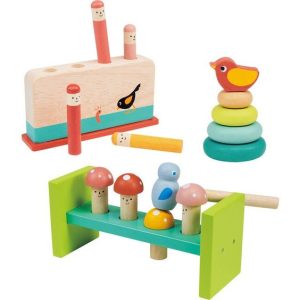
The Power of Play Across Cultures
The beauty of toys lies in their ability to transcend borders and cultural differences. Kids around the world love to play, and while specific toys may vary by region or tradition, the core benefits of play remain universal.
Here are some examples of how toys promote play across cultures:
-
Dolls and Stuffed Animals: Nurturing play with dolls or stuffed animals is seen in many cultures. These toys provide comfort, security, and a focus for imaginative storytelling.
-
Active Play Toys: Balls, jump ropes, and jump rings are popular in many cultures because they encourage active play, gross motor development, and social interaction.
-
Games: Board games, card games, and simple games like hopscotch are enjoyed by children around the world. Games offer opportunities for learning rules, taking turns, and strategizing.
-
Creative Play Materials: From crafting with natural materials to drawing pictures in the dirt, creative expression through play is a universal language.

